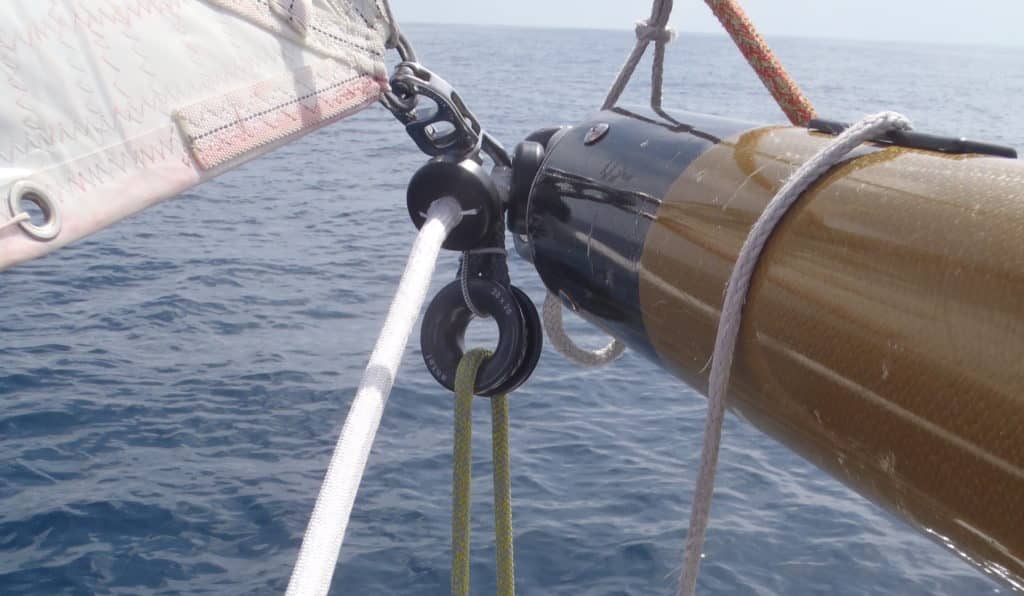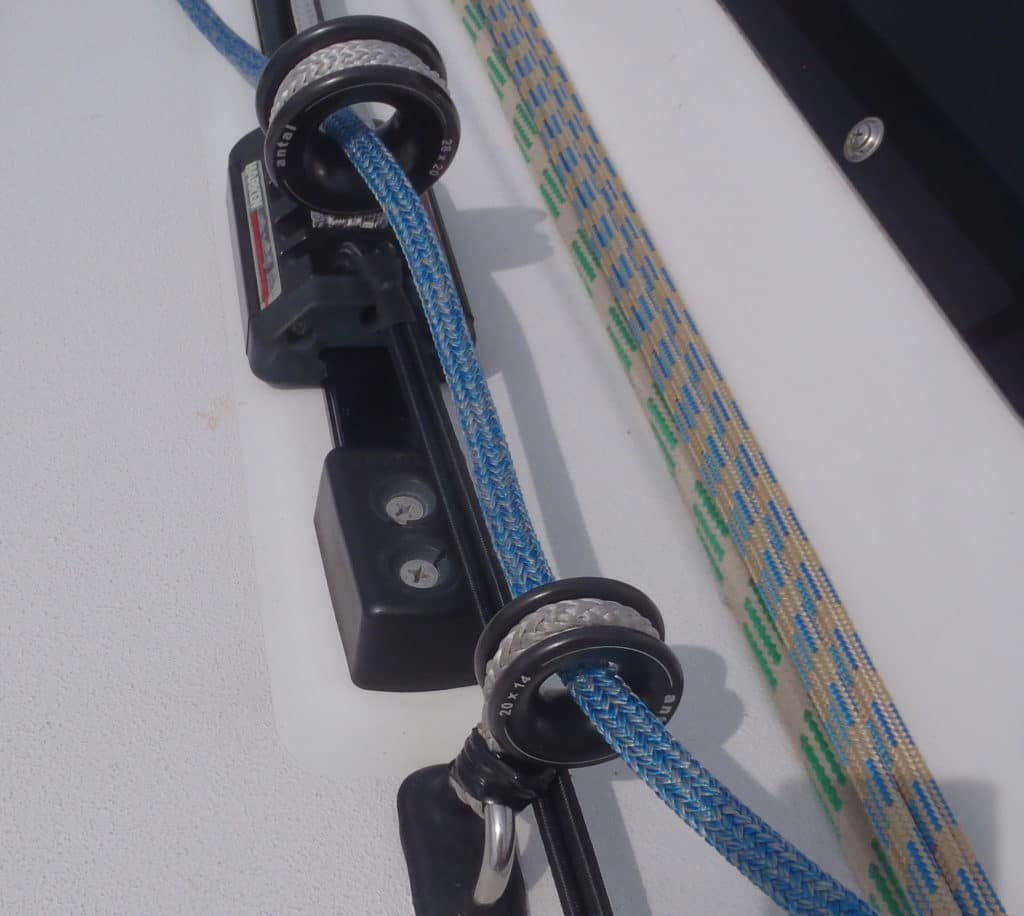
Low-friction rings are all the rage. With no moving parts, breakage and maintenance is zero. They are less expensive than standard blocks, so changing them out is not as costly. And they are lighter than blocks, so every change is a net gain in overall weight. Plus, they’re very strong. But you shouldn’t necessarily use them everywhere. They are best used for lines that aren’t adjusted often or have limited travel.
As they have no moving parts and are quite strong, they are good in applications with high, fairly static loads. We use them for afterguy blocks, genoa car leads, tackline eyes, gross purchase parts of vangs and backstays, fairleads to re-route halyards and other lines, and cunningham purchases.
Low-friction rings generally don’t work so well with lines that are constantly adjusted under high load, especially without a winch. They are also not the best with small loaded line that requires precise adjustments, or purchases that have to ease fast under low load. Here’s where we don’t use them: Fine-tune parts of vangs and backstays, travelers, jib-lead adjusters, spinnaker sheets, halyard bocks at the base of a mast, or outhaul purchase.










